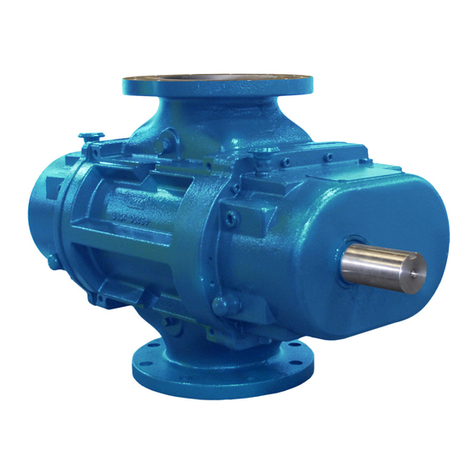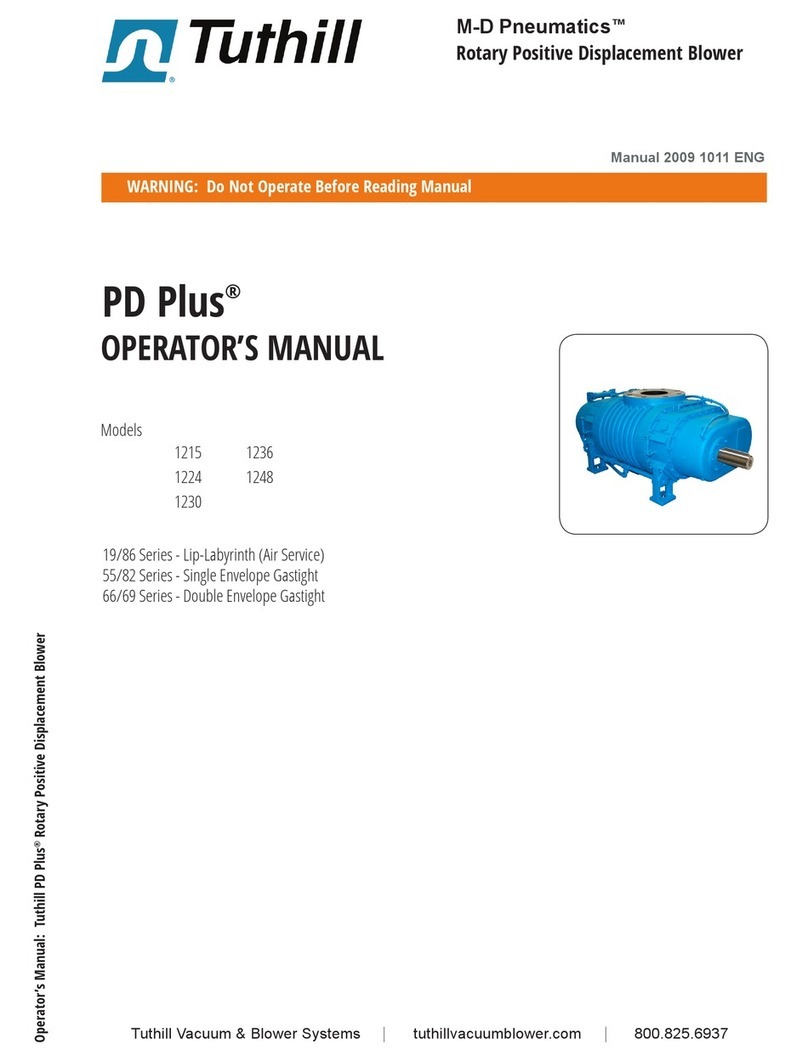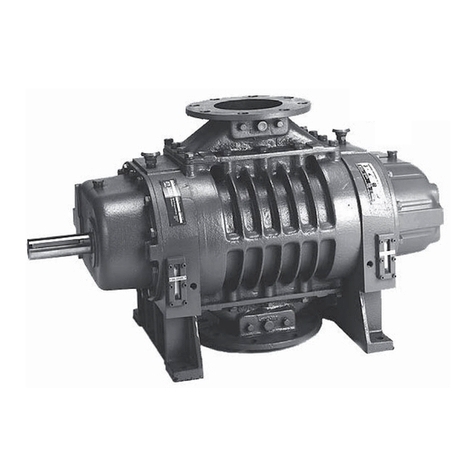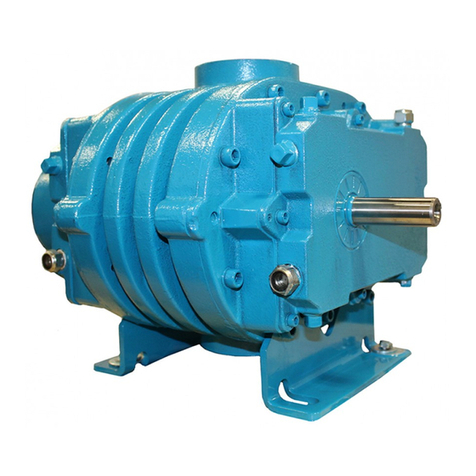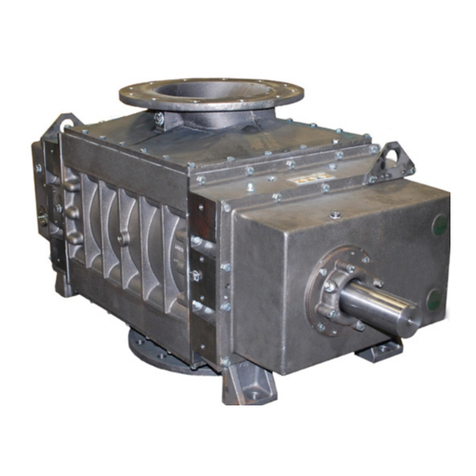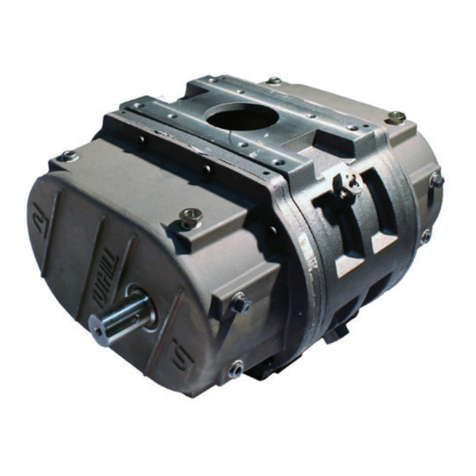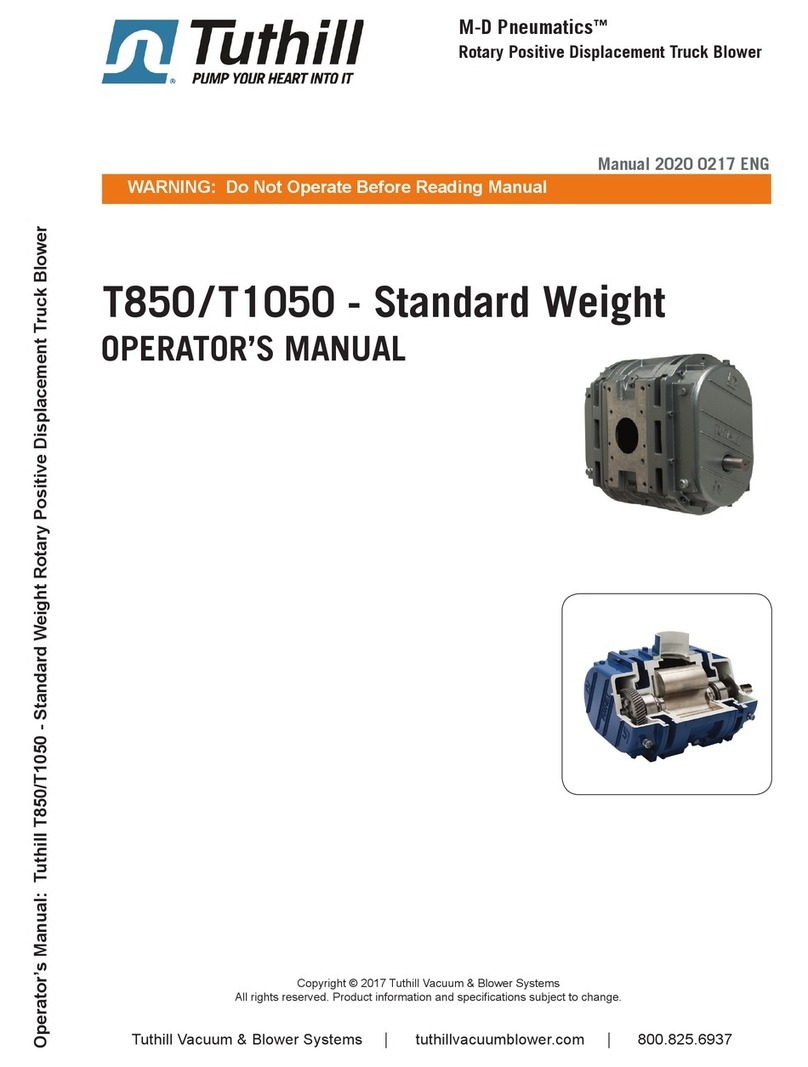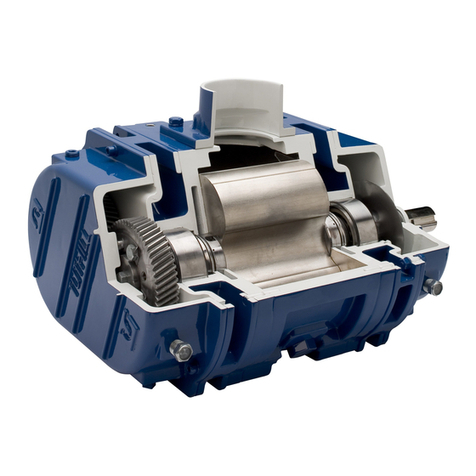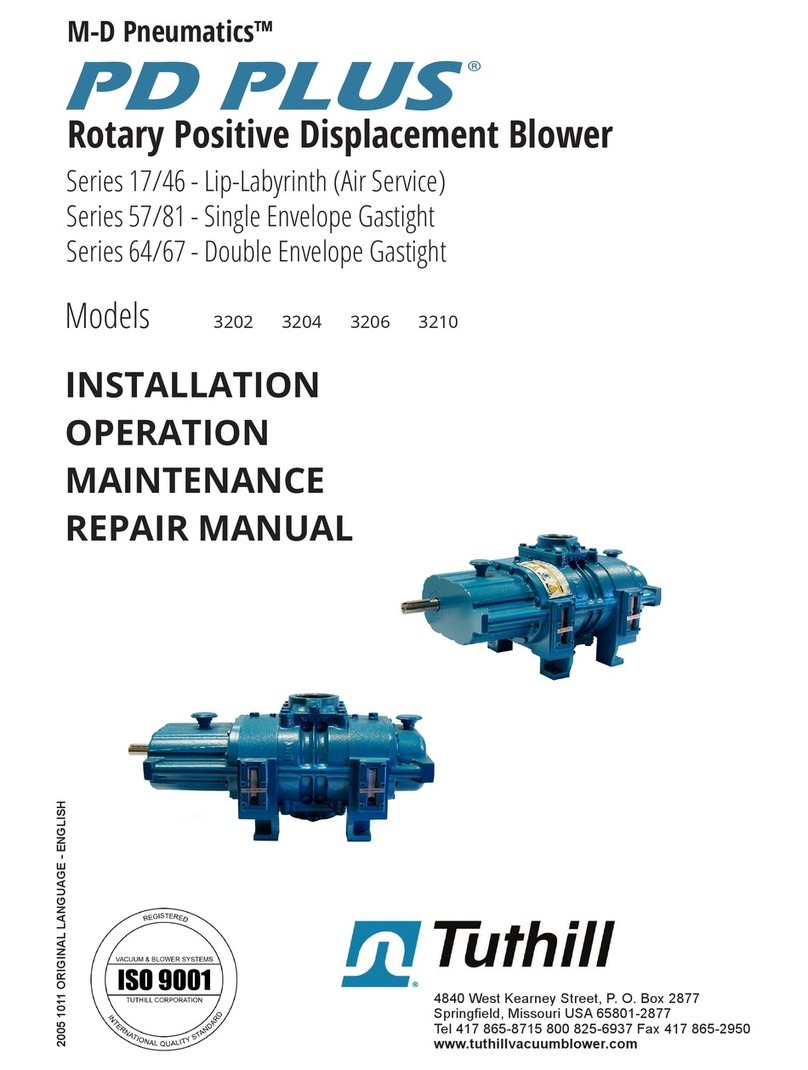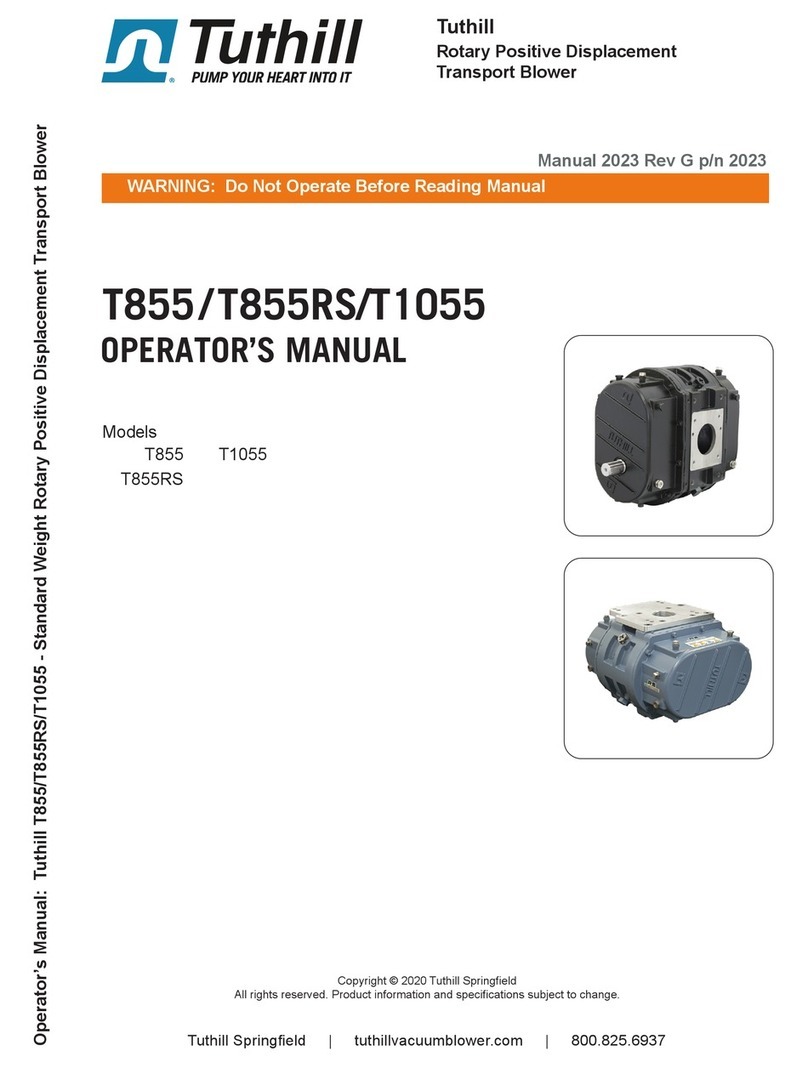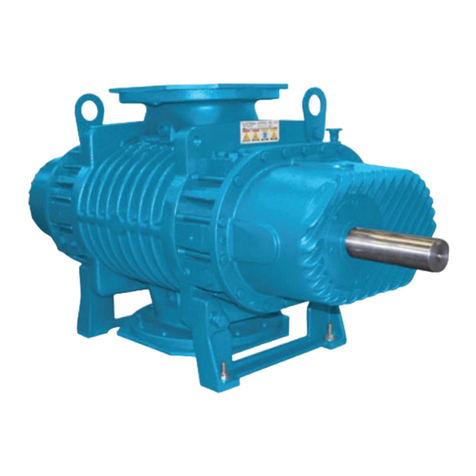
Disclaimer Statement:
All information, illustrations and specications in this manual are based on the latest information available at
the time of publishing. The illustrations used in this manual are intended as representative reference views only.
Products are under a continuous improvement policy. Thus, information, illustrations and/or specications to
explain and or exemplify a product, service or maintenance improvement may be changed at any time without
notice.
Rights Reserved Statement:
No part of this publication may be reproduced or used in any form by any means - graphic, electronic or me-
chanical, including photocopying, recording, taping or information storage and retrieval systems - without the
written permission of Tuthill Vacuum & Blower Systems.
Copyright © 2018 Tuthill Vacuum & Blower Systems
All rights reserved. Product information and specications subject to change.
The employees of Tuthill Vacuum & Blower Systems thank you for your purchase!
Tuthill Vacuum & Blower Systems proudly manufactures
Kinney®vacuum pumps and M-D PneumaticsTM blowers and
vacuum boosters in Springeld, Missouri, USA. We bring
100+ years of engineering experience and solid, hands-
on care to help customers keep their processes running.
Your satisfaction is important to us so please take time to
provide your Tuthill sales representative with performance
feedback. We love to hear from our customers!
Tuthill is a family owned business that was started by James
B. Tuthill in 1892. At that time, Tuthill manufactured com-
mon brick to Chicago construction companies who were
fueling the city’s rapid expansion. Fast forward to today
and Tuthill now serves sustaining, global markets like agri-
culture, chemical, construction, energy, food and beverage,
pharmaceuticals and medical, transportation, and utilities.
While the company has changed in what it manufactures,
one thing remains throughout every Tuthill line of business
– we are a company with HEART. Our slogan is “Pump Your
Heart Into It” and everyday our employees do just that as
they represent the Tuthill brand and dare to make better.
Thank you for making Tuthill Vacuum & Blower Systems
part of your company’s process! FIND OUT MORE AT
TUTHILL.COM
A company with heart
right from the start.
